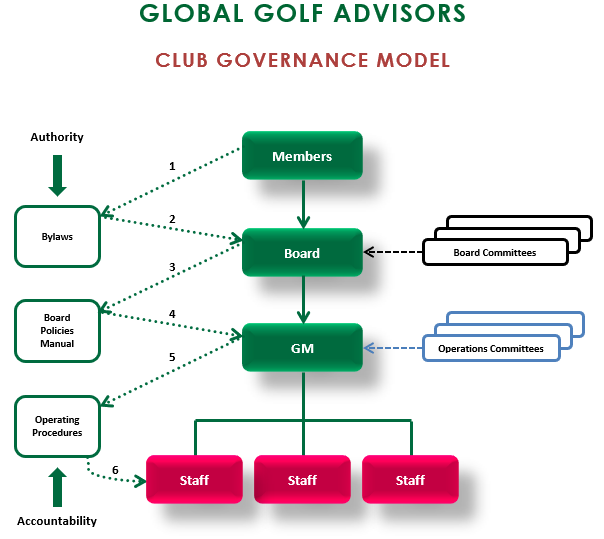If the noise associated with the 2020 and 2024 national elections is any indication, there is no shortage of public distrust of electronic voting systems, which have been around for more than six decades, starting with the use of punched card systems.
Claims of stolen elections, instances of voter fraud and reports of malfunctioning equipment have contributed to the skepticism of electronic voting in general and online voting in particular—a skepticism likely shared by many club members. Even so, there are sizeable benefits to online voting that qualify for consideration by the club’s leadership. Moreover, there are policies and practices that significantly increase the reliability and accuracy of online voting.
Benefits of Online Voting
Greater Member Participation in Elections. Rather than being required to attend a meeting and fill out a paper ballot, members can access an online ballot at their home or work and complete the process in minutes rather than hours. Once the vote is submitted, members receive a virtual confirmation assuring them that their vote was tallied. Higher voter turnout means higher levels of engagement by members, resulting in a more accurate indicator of the entire membership.
Potential Cost Savings. Online voting can be less expensive since the avoided cost of printing and mailing election materials and ballots is often more than the fees incurred from the online voting platform vendor. There is also the benefit of fewer staff hours handling materials, processing ballots and tabulating results.
Secure Platforms. There are several well-tested, trusted internet platforms for online voting available to support club member votes. The platforms have easily implemented processes with the necessary security checks to authenticate voters. They also leave audit trails to allow for validating results.
Speed and Accuracy of Results. Once the election is closed, results are quickly tabulated and certified. Not only does this save time and resources, it also eliminates the human error that may occur during a manual vote count. Depending on whether demographic data are collected with the vote, the online platform can provide demographic segmentation while maintaining voter anonymity, thereby giving club leadership information about how opinions vary by demographic.
Selecting an Online Voting Systems Vendor
Important factors to consider when selecting a vendor may include:
- Ensuring you understand what is included in the service and the associated cost, so you can compare “apples to apples” with other vendors.
- The reliability of processes for protecting the confidentiality of data.
- The process for integrating written ballots if the vote is not entirely online.
- The ease of voting, i.e., the clarity of the process and the likelihood of errors from members who are not tech savvy.
- The results of interviewing references, i.e., feedback from clients with similar member profiles who have used the online platform.
Considerations
There are several factors that must be considered when planning and preparing for an online vote. They include:
Aligning Bylaws. Club bylaws will need to be reviewed as they typically cover voting requirements, which may need to be amended to permit online voting. Bylaws also specify the timing of annual meetings, notification lead times, publication of the slate of candidates, and policies related to proxies, e.g.:
- Proxy requirements and the format of proxies, g., general proxies vs. directed proxies.
- Critical timing requirements and limitations on when proxies can be collected and the deadline for submitting a vote.
- Explicit requirements to issue paper notices, ballots, or
- Specification of who is authorized to administer, issue or receive proxies and ballots.
Election Planning. Vendors specializing in online systems for private clubs will offer support and guidance on the logistics and technical aspects of conducting the online vote. However, it is incumbent upon club leaders to develop and execute a plan to educate members about the process. As mentioned above, there will almost certainly be bylaws that need changing. Because amending the bylaws at most clubs requires member approval, it is critical that members be comfortable with and supportive of the proposed voting process. Be transparent with the plans to use online voting and provide multiple means to communicate to and hear from members, e.g., email messages, town hall meetings and focus groups. Ensure the involvement of legal counsel both in the drafting of amendments to the bylaws and in assessing the risk of legal action by a member.
Your plan may be to start with a hybrid approach where members are given a choice of using a paper ballot or voting online. Although the hybrid approach adds a degree of complexity to the process, it may address concerns from members who are leery of online voting. Moreover, the results from the initial use of a hybrid approach will provide a gauge of the percentage of members who choose to use a paper ballot instead of online voting. If the percentage of members using the paper ballot is low—say in the single digits—it may be appropriate to require that all votes be registered online.
The Leap to a Brave New World
Even though a hybrid approach may have a certain political appeal, we recommend a change in the bylaws that specifies the use of online voting only. Members today are more technologically savvy than ever and will continue to rely on electronic devices to complete everyday tasks. Accordingly, we believe member resistance to going completely online will be modest. However, don’t presume a zero-member pushback. Put together a plan for two-way communication with the members, including special training for members who do not have access to a computer or the inability to use it to register their vote. Finally, ensure your plan has competent legal review, and move forward to realize the full benefits associated with online voting.
This piece was published in the National Club Association‘s Summer 2023 Issue of Club Governance.







